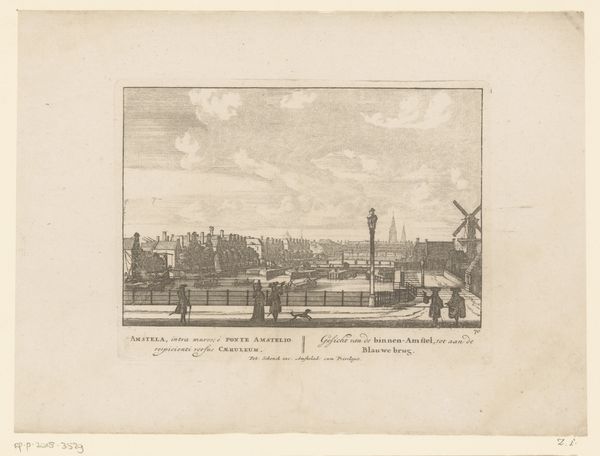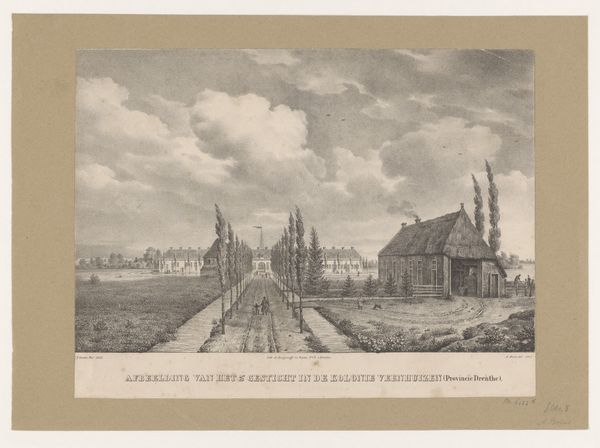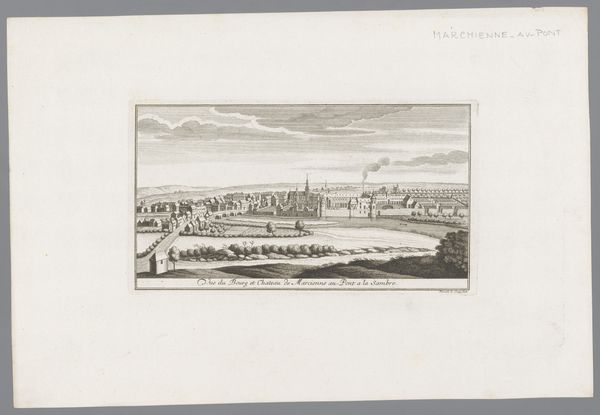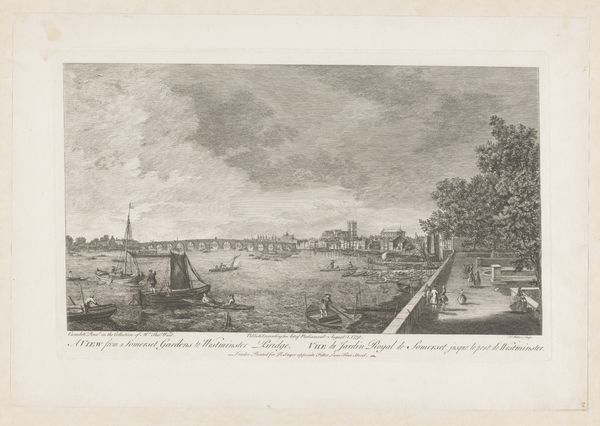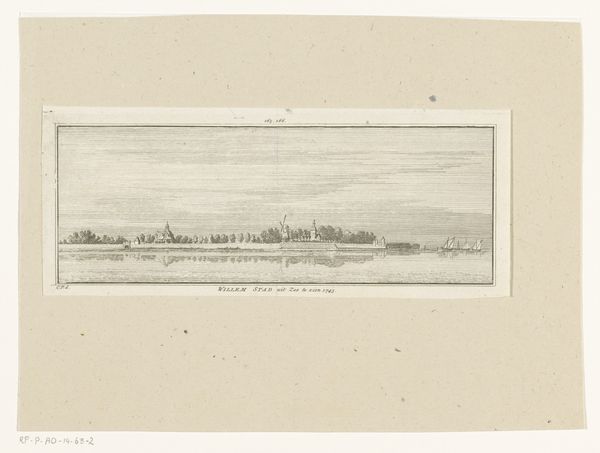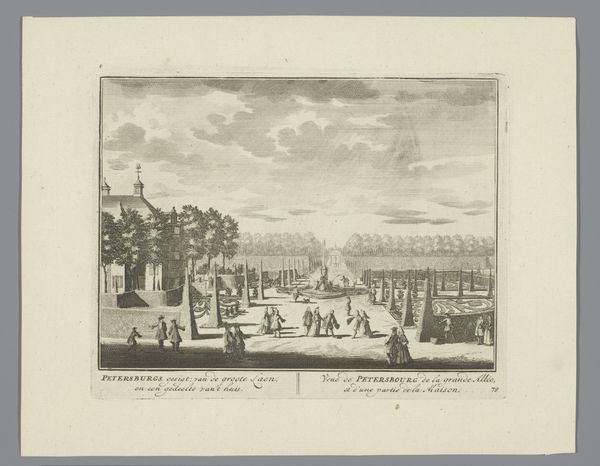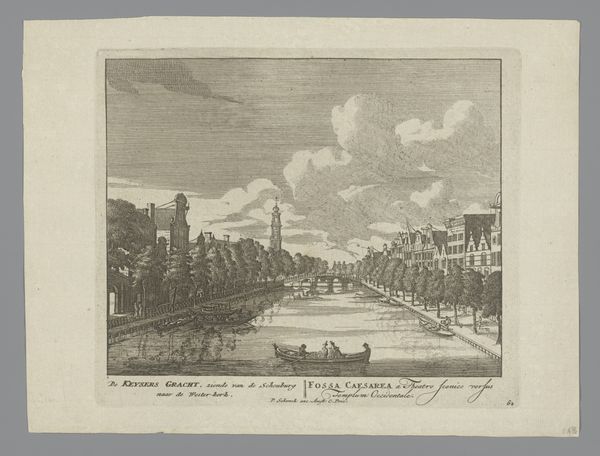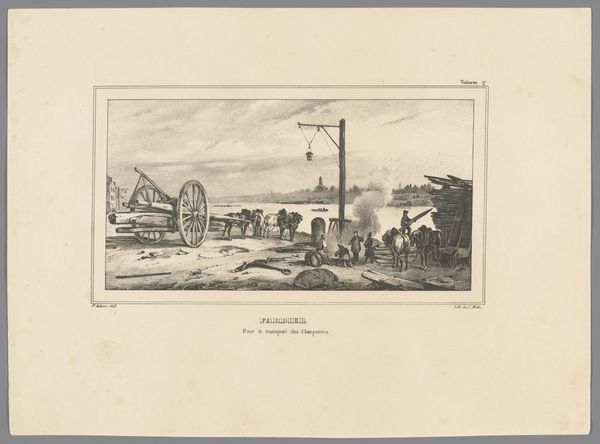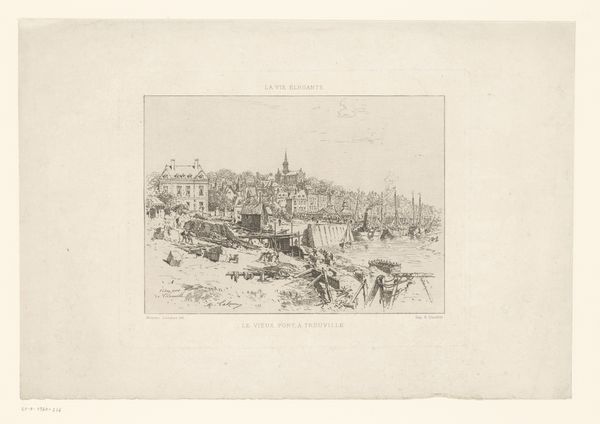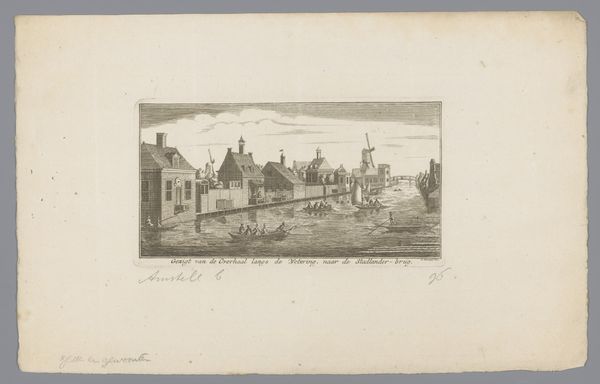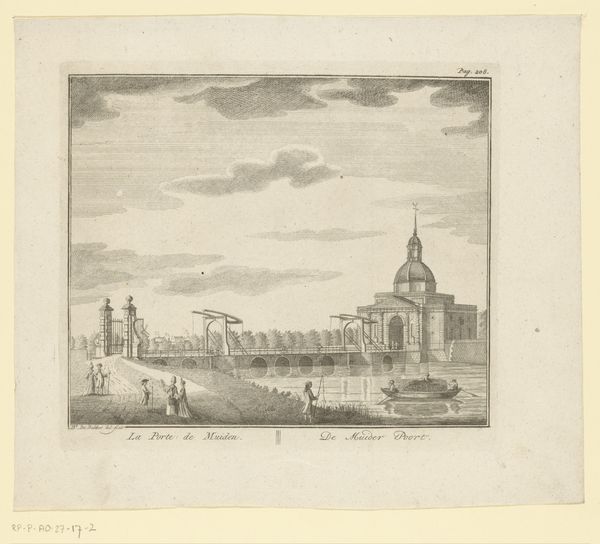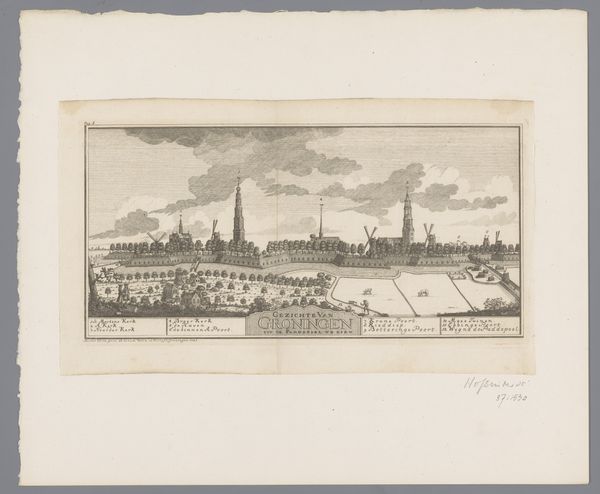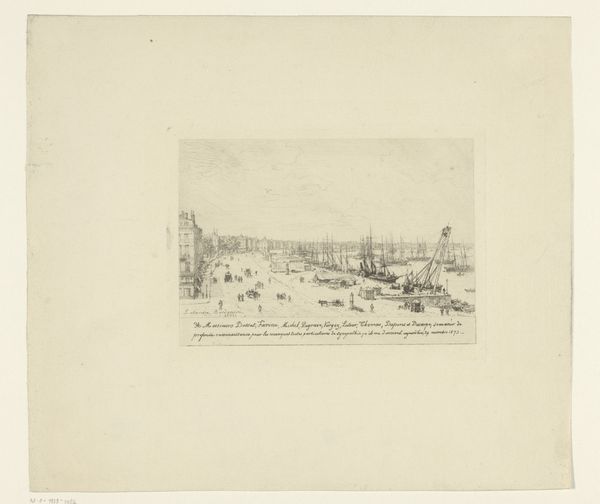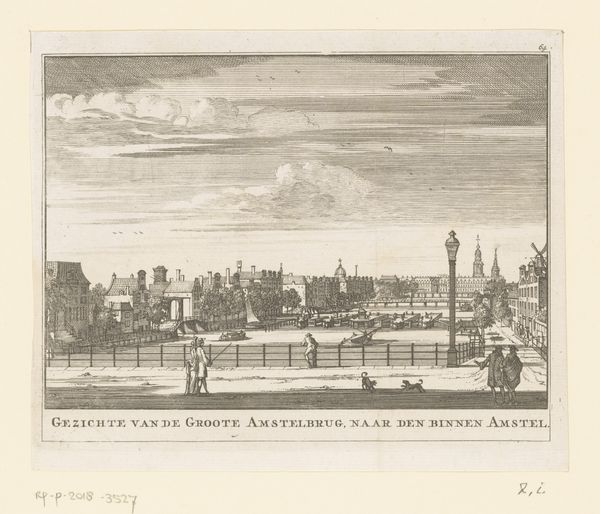
print, engraving
#
dutch-golden-age
# print
#
landscape
#
cityscape
#
engraving
#
monochrome
Dimensions: height 194 mm, width 297 mm
Copyright: Rijks Museum: Open Domain
Curator: Here we have an engraving titled "Gezicht op de Zaagmolenpoort in Amsterdam," dating back to 1663. It's currently held in the collection of the Rijksmuseum. Editor: Ah, a tranquil scene, almost dreamlike in its delicate monochrome. The windmills punctuate the horizon like little scribbles, don't you think? It gives me this lovely, melancholic feeling of bygone days, hard work and simpler times. Curator: Indeed. The print captures the Zaagmolenpoort, or Saw Mill Gate, an important point of entry to Amsterdam during the Dutch Golden Age. Engravings like these served not only as art objects but also as crucial documents for understanding urban expansion and economic activity of the time. The details – the placement of windmills, the activities near the gate, even the types of boats used – reflect a complex infrastructure tied to resource processing. Editor: I'm particularly drawn to those figures near the front – are they bleaching textiles, perhaps? Their bent postures and concentrated gestures hint at the repetitive, demanding labor inherent in textile production, which really brings a human element to this cityscape, it’s not just the port. The eye sort of moves from the laborers and out and away, expanding the human element away from the centre of the frame. Curator: Precisely! Bleaching linen was a significant industry just outside Amsterdam, and this image offers insight into the labor practices. This also underscores the link between city life and its immediate rural surroundings – something we easily forget when looking at history through the lens of 'high art'. This sort of everyday engagement is so important. Editor: It does. I love how something seemingly ordinary, like an engraving of a city gate, can be so revealing about both industry, infrastructure and society in the Dutch Golden Age. I can feel the rhythms of 17th-century Amsterdam as clear as day! Curator: Exactly. Through an examination of the work of human hands, what may seem on its surface to be simply documentation reveals an incredible amount about process and place.
Comments
No comments
Be the first to comment and join the conversation on the ultimate creative platform.
